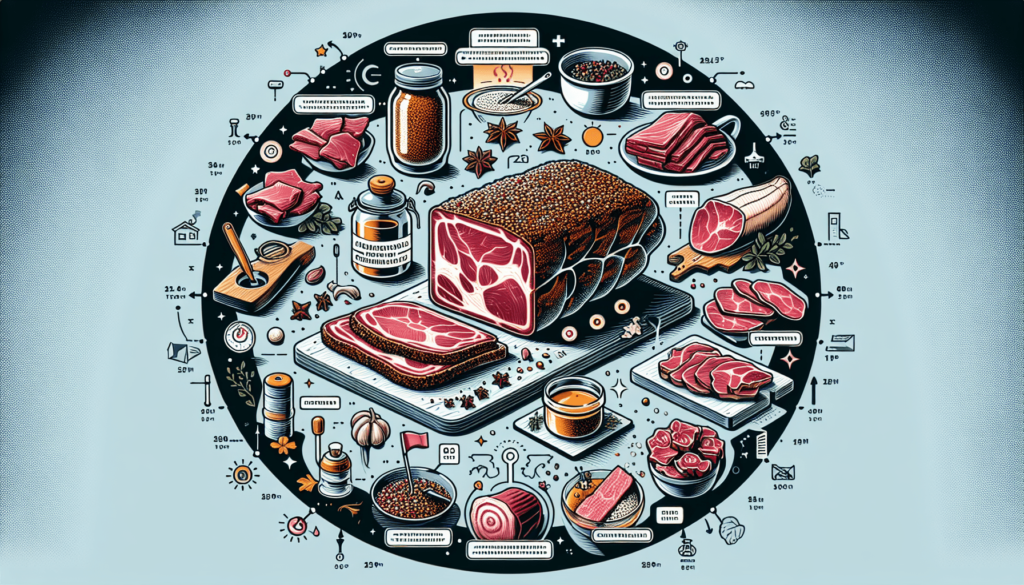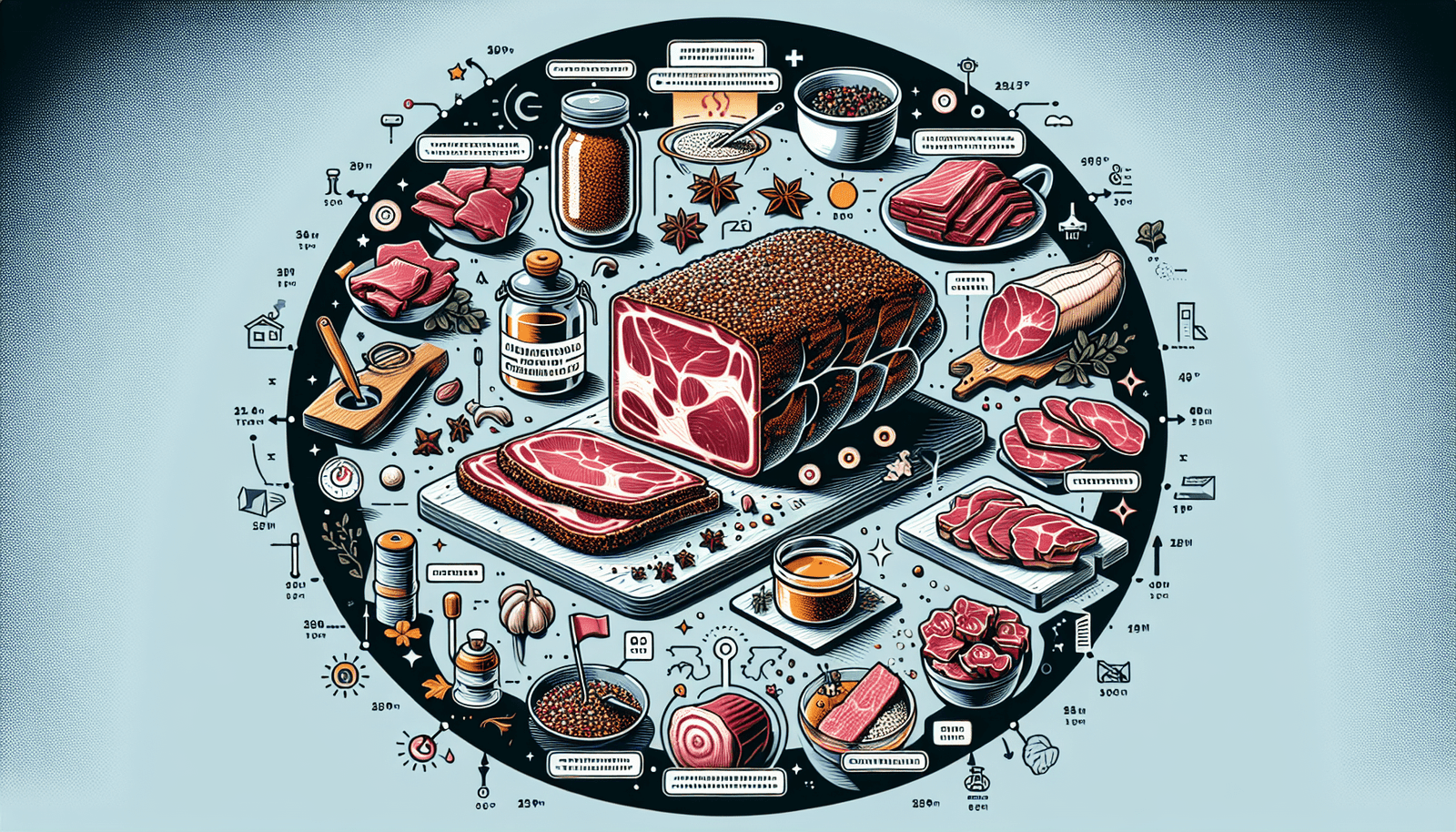Did you know that curing meat has been around for centuries and is not only a way to preserve food but also a means of enhancing flavor? In this article, you’ll find a collection of mouthwatering curing meat recipes that are guaranteed to take your culinary skills to the next level. From traditional classics like pancetta and prosciutto to more adventurous creations like whiskey-infused bacon and honey bourbon ham, there’s something for everyone to enjoy. So grab your apron and get ready to embark on a culinary adventure that will leave your taste buds craving for more.
Curing Meat Recipes
When it comes to preserving meat and enhancing its flavor, curing is a fantastic method to consider. Whether you’re a seasoned chef or a culinary enthusiast looking to explore new techniques, there are various methods of meat curing you can try. In this article, we’ll delve into the different methods, basic ingredients, and provide step-by-step instructions for popular recipes such as bacon, ham, fish, sausages, and beef jerky. So put on your apron, roll up your sleeves, and let’s get started on this delicious journey of meat curing!

Different Methods of Meat Curing
Dry Curing
Dry curing is a process where meat is coated with a mixture of salt, sugar, and spices before being left to air dry. This method removes moisture from the meat, making it less prone to spoilage while intensifying the flavors. It’s commonly used for cured hams, bacon, and beef jerky. The curing mixture acts as a preservative, allowing you to store the meat for an extended period without refrigeration.
Wet Curing
Wet curing, also known as brining, involves submerging the meat in a saltwater solution, often enhanced with various spices and aromatics. This method is particularly useful for meats that benefit from moisture retention, such as fish and certain cuts of pork. Wet curing infuses flavors into the meat while keeping it juicy and tender. The saltwater solution acts as a brine, drawing out the moisture from the meat while imparting delicious flavors.
Basic Ingredients for Meat Curing
Regardless of the curing method you choose, there are a few basic ingredients that play a crucial role in the process:
- Salt: A key component, salt is responsible for drawing out moisture from the meat, inhibiting bacteria growth, and adding flavor.
- Sugar: Used in combination with salt, sugar balances out the harshness of salt and promotes caramelization during cooking.
- Spices and Aromatics: This is where you can get creative! Add spices like black pepper, paprika, garlic powder, or aromatic ingredients like herbs and citrus zest to enhance the flavors of your cured meat.
Dry Curing Meat Recipes
How to Cure Bacon
Making your bacon at home is a rewarding experience that results in a flavor far superior to store-bought versions. Begin by selecting a quality pork belly and prepare a dry curing mixture using salt, sugar, and spices of your choice. Rub the mixture thoroughly into the pork belly, ensuring all sides are covered. Place it in a resealable bag or wrap it tightly in plastic wrap and refrigerate for several days. Remember to turn the belly occasionally, allowing the flavors to distribute evenly. Once the curing process is complete, rinse off excess salt, pat dry, and you’re ready to cook your homemade bacon!
How to Cure Ham
Curing your own ham may sound daunting, but it’s surprisingly straightforward. Start with a boneless pork leg, ideally weighing about 10-12 pounds. Prepare a dry curing mixture with salt, sugar, and your preferred seasonings. Apply the mixture generously to the pork leg, ensuring all surfaces are coated. Place it in a large container, cover, and refrigerate for several days. During this time, turn the ham daily to evenly distribute the flavors. Once cured, rinse the excess curing mixture off the ham, pat dry, and it’s ready for cooking or smoking to achieve that irresistible aroma and taste.
Wet Curing Meat Recipes
How to Cure Fish
Fish curing is a wonderful way to transform the catch of the day into a flavorful delicacy. Begin by preparing a wet curing brine using salt, sugar, and herbs or spices. Submerge your fish fillets in the brine solution and refrigerate them for several hours. The length of time will depend on the thickness of the fillets. Once the curing process is complete, remove the fish from the brine, rinse with cold water, and pat dry. Now your fish is ready to be enjoyed, whether smoked, grilled, or even enjoyed raw as in traditional dishes like gravlax.
How to Cure Sausages
Creating your sausages from scratch allows you to tailor the flavors exactly to your liking. To cure sausages, start by mixing ground meat, fat, and a curing salt mixture. Add herbs, spices, and other seasonings to create your desired sausage flavor. After stuffing the sausage mixture into casings, allow them to cure in the refrigerator for a recommended period. Slowly smoking the sausages after the curing process adds an additional layer of flavor. Now you can savor the satisfaction of biting into your homemade, perfectly cured sausages!

How to Cure Beef Jerky
Beef jerky offers a portable, high-protein snack that can be enjoyed anytime, anywhere. To cure beef jerky, begin by selecting lean cuts of beef and slicing them against the grain into thin strips. Prepare a dry curing mixture with salt, sugar, and spices, and coat the beef strips evenly. Refrigerate the coated strips for several hours, allowing the flavors to permeate the meat. Afterward, remove the beef from the refrigerator, pat dry, and lay the strips on a wire rack. Slowly dry the beef jerky in an oven or food dehydrator until it reaches the desired texture. Once cooled, you’re left with a flavorful snack that will keep you coming back for more.
Tips for Successful Meat Curing
- Invest in quality meat: The quality of the meat you start with will greatly impact the final result. Look for fresh, well-marbled cuts to ensure a delicious outcome.
- Ensure proper temperature control: Throughout the curing process, it’s crucial to maintain the appropriate temperature. Consult reliable resources or recipes to ensure you’re following the recommended temperature guidelines.
- Patience is key: Curing is a process that takes time. Be patient and allow the meat to cure for the recommended duration to achieve the best flavor and texture.
- Experiment with flavors: Feel free to experiment with different combinations of spices and aromatics. Don’t be afraid to get creative and discover your own signature curing recipes!
- Store cured meat correctly: Once your meat is cured, ensure it is properly stored to maintain its freshness. Vacuum-sealed bags or airtight containers in the refrigerator or freezer are ideal for keeping your cured creations in optimal condition.
So, whether you’re looking to craft your own bacon, ham, fish, sausages, or beef jerky, these meat curing recipes provide you with a solid foundation to explore the wonderful world of curing. Remember, the beauty of this culinary technique lies in the ability to adapt and create your own unique flavors. So grab your apron, gather your ingredients, and let your creativity run wild as you embark on the journey of meat curing.

